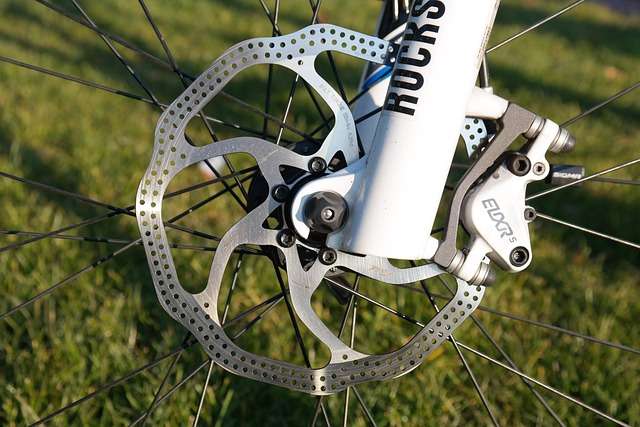
How do bicycle disc brakes work?
Introduction:
Bicycle disc brakes have revolutionized the world of cycling, providing enhanced stopping power, improved modulation, and consistent performance in various conditions. In this extensive exploration, we’ll unravel the inner workings of bicycle disc brakes, examining the components, mechanisms, and benefits that make them a preferred choice for cyclists of all levels.
Explanation:
Evolution of Bicycle Brakes:
Historical Perspective:
The journey of bicycle brakes began with rudimentary designs like spoon brakes and coaster brakes. As cycling progressed, the evolution of braking systems advanced from rim brakes and culminated in the sophisticated technology of disc brakes.
Transition to Disc Brakes:
Disc brakes gained prominence in the late 20th century.Initially, they distinguished themselves in mountain biking by demonstrating superior performance in challenging terrain. As time progressed, their advantages led to widespread adoption in various cycling disciplines.
Understanding How Disc Brakes Generate Stopping Power:
The Physics of Friction:
The fundamental principle behind disc brakes is the conversion of kinetic energy into heat through the force of friction. When the brake lever is squeezed, the brake calipers close in on the disc rotor, creating friction between the brake pads and the rotor surface.
Enhanced Heat Dissipation:
Disc brakes have a superior heat dissipation mechanism compared to rim brakes. The disc rotor, being external to the wheel, allows for effective cooling, preventing the brakes from overheating during prolonged or intense use.
Modulation for Precision:
One of the key advantages of disc brakes is their superior modulation. Modulation refers to the rider’s ability to control the braking force precisely. Disc brakes provide a more linear and predictable response, allowing cyclists to apply the desired amount of braking force in different situations.
Benefits of Bicycle Disc Brakes:
Superior Stopping Power:
Disc brakes provide exceptional stopping power, especially in wet or muddy conditions. This enhanced performance is crucial for riders across various disciplines, from mountain biking to road cycling.
Consistent Performance:
Disc brakes offer consistent performance regardless of weather conditions. Unlike rim brakes, which may suffer from reduced effectiveness in wet conditions, disc brakes maintain their stopping power consistently.
Reduced Wear on Rims:
Rim brakes can cause wear on the wheel rims over time. Disc brakes eliminate this issue as the braking force is applied to a separate disc rotor rather than the wheel rim, prolonging the lifespan of both the brakes and the wheel.
Improved Modulation:
The precise control and modulation offered by disc brakes contribute to a more enjoyable and safe riding experience. Cyclists can finely tune their braking force, enhancing control in various scenarios.
Choosing the Right Disc Brakes for Your Bike:
Consider Your Riding Style:
The choice between hydraulic and mechanical disc brakes often depends on personal preference and riding style. For riders seeking maximum modulation and power, hydraulic systems may be preferable. Those prioritizing simplicity and ease of maintenance might opt for mechanical disc brakes.
Compatibility:
Ensure that your bicycle frame and fork are compatible with disc brakes. Some frames and forks have specific mounts designed for disc brake calipers.
Budget Considerations:
While hydraulic disc brakes offer premium performance, they come at a higher cost. Mechanical disc brakes can be a more budget-friendly option while still providing reliable stopping power.
Conclusion:
In conclusion, bicycle disc brakes have transformed the cycling landscape, offering a leap in braking performance, modulation, and reliability. From their historical roots to the sophisticated systems of today, disc brakes have become an integral part of various cycling disciplines.
Understanding the mechanics of disc brakes empowers cyclists to make informed decisions when choosing or maintaining their braking systems. Whether navigating challenging mountain trails, commuting through urban landscapes, or enjoying leisurely rides, the benefits of disc brakes contribute to a safer, more enjoyable cycling experience.

